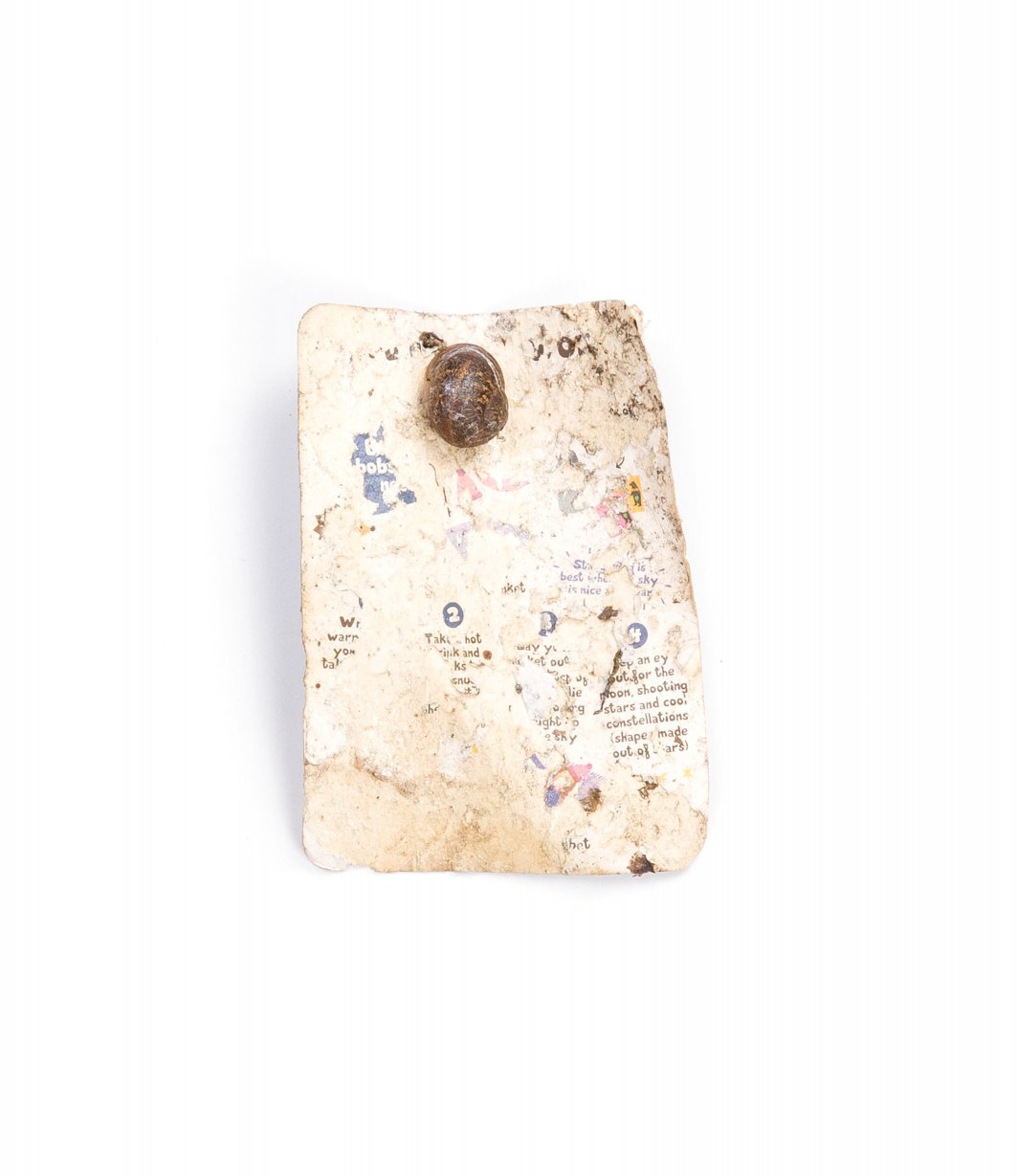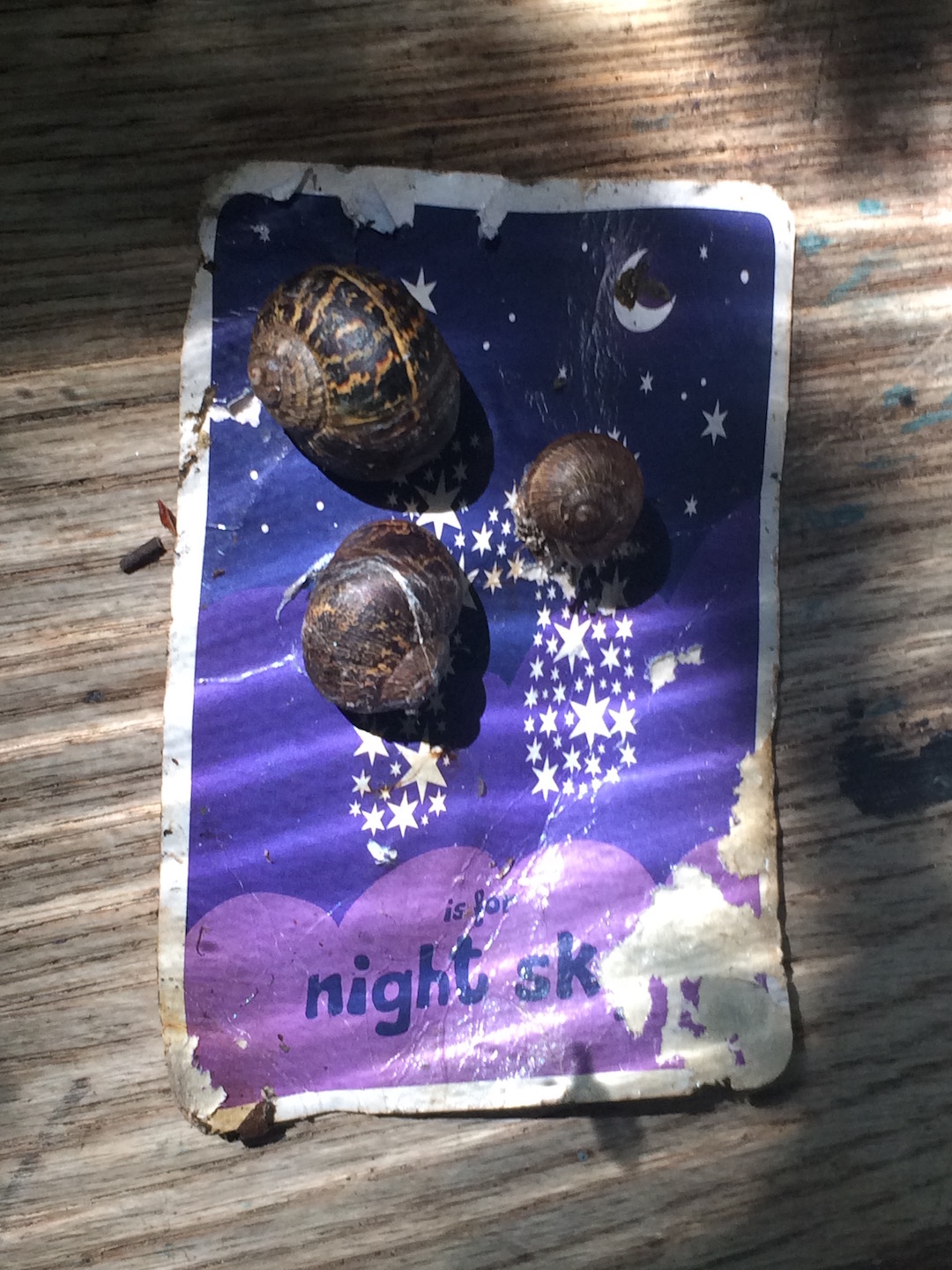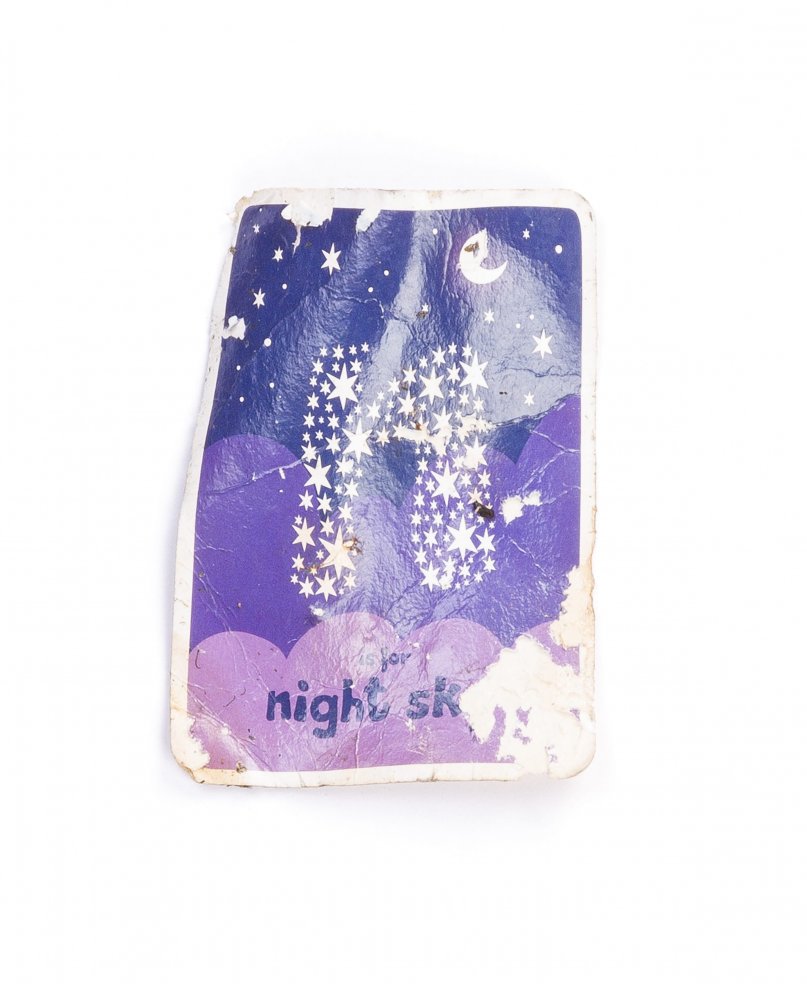When I found it, this alphabet card was home, and dinner, for a constellation of snails. Snails are like some sort of missing link between mineral and animal. They inhabit a shell not found, but grown in layers, like the oyster, from calcium carbonate or calcite – the same material as lime scale, marble and old-school chalk. Snails love eating paper. It’s a rich source of calcium stearate – a white, waxy powder that we use to help make paper glossy and firm – which they gradually secrete in fine layers, making the shell spiral bigger as they grow. They also break down vegetable matter and recycle it into the soil.
We now know that all the elemental materials that make up our bodies and surroundings appeared when the known universe was born, including calcium, and snails.
The city suffers from light pollution, and in London I can usually count the number of stars I can see on my fingers. As soon as I head out of town, the night sky becomes rich and full, expanding my imagination and my sense of reality, my sense of where I am.
I have been looking at the material on site at Phytology as a stargazer in the city, searching for meaning, stories and imaginings – identifying rhythms and relationships, wondering if by looking hard at the constellations of our terrestrial stuff, we can make more sense of our surroundings and our lives.





